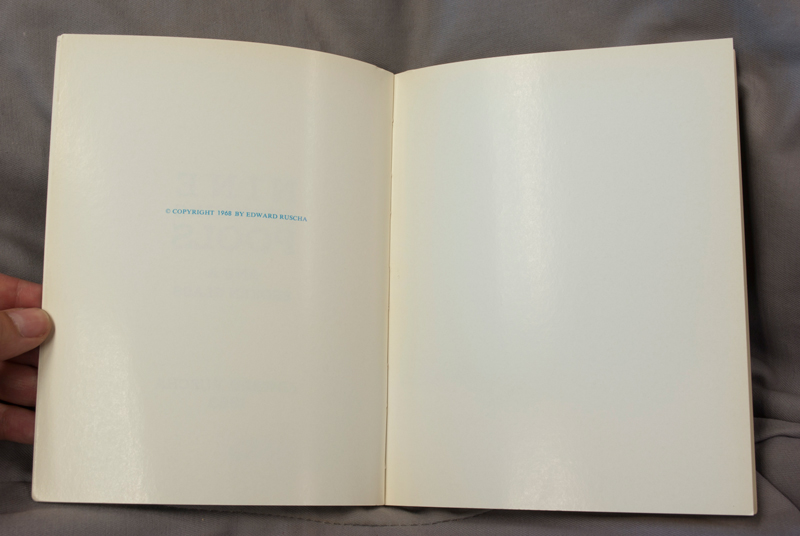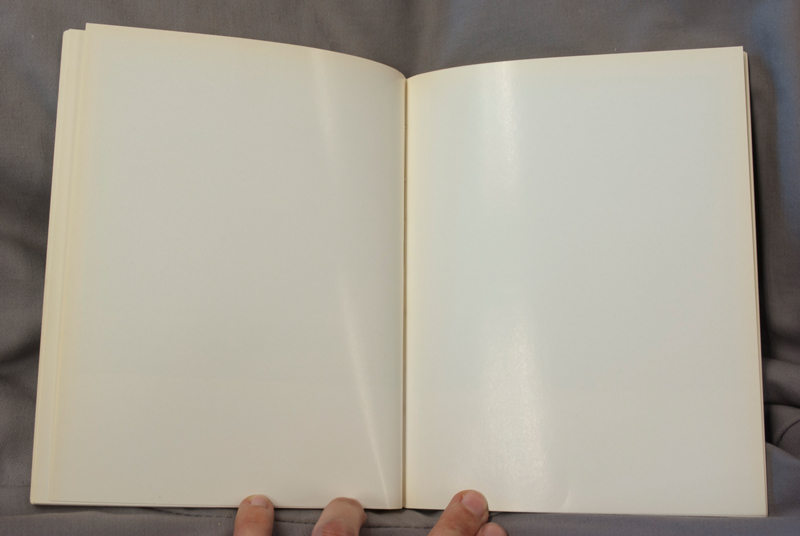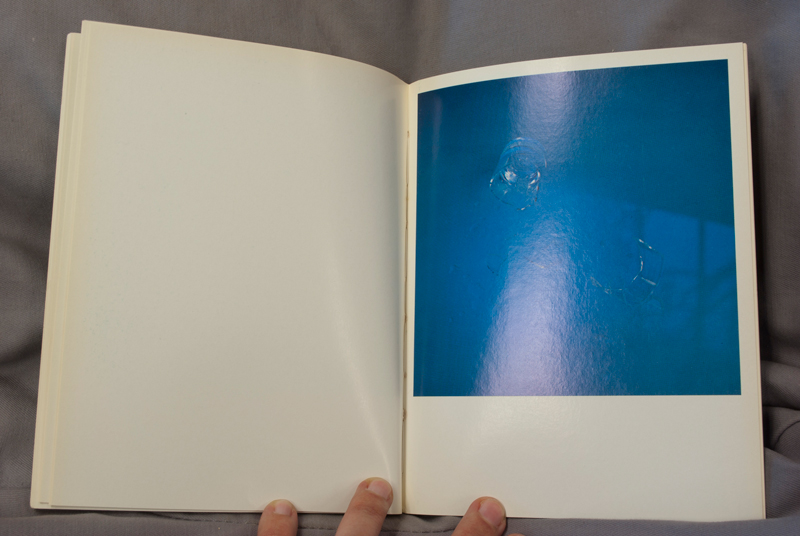The Empty Water
Ed Ruscha, Nine Swimming Pools and a Broken Glass, 1968
The pagination of a book should be like a film. There will be loud and energetic scenes, quiet moments, long shots and close-ups, and titles and credits. If you haven't watched Chris Marker's La Jetee, watch it now. It is the best example of pagination and pacing with still images.
Ed Ruscha's Nine Swimming Pools and a Broken Glass is another wonderful example. The images of swimming pools without people, expanses of blue, and blank white pages talk about the sense of emptiness and absence in a world of luxury and leisure. The broken glass image adds a hint of danger. Ruscha made this book in 1968, a year before the Manson murders. In Slouching Toward Bethlehem, Joan Didion captured the atmosphere of emptiness and looming danger in the late 1960s:
The center was not holding. It was a country of bankruptcy notices and public-auction announcements and commonplace reports of casual killings and misplaced children and abandoned homes and vandals who misplaced even the four-letter words they scrawled. It was a country in which families routinely disappeared, trailing bad checks and repossession papers. Adolescents drifted from city to torn city, sloughing off both the past and the future as snakes shed their skins, children who were never taught and would never now learn the games that had held the society together. People were missing. Children were missing. Parents were missing. Those left behind filed desultory missing persons reports, then moved on themselves.
And then there is the simple beauty of the book. The turquoise color and minimal typography in Stymie are aesthetically incredible. Nine Swimming Pools and a Broken Glass is the best argument that the pages do not have nothing on them, that negative space is bank. There's a whole lot of emptiness there.




































